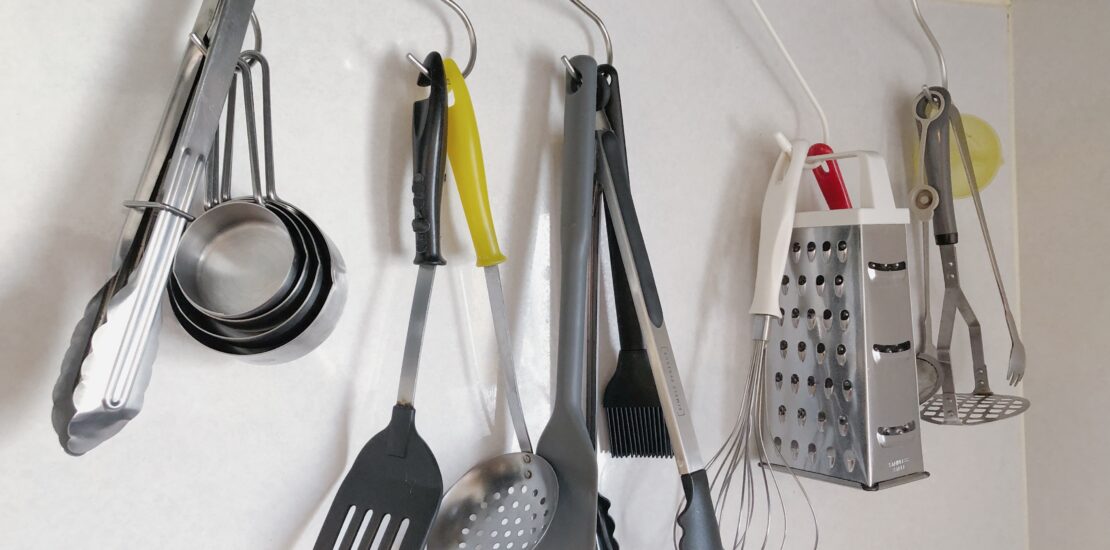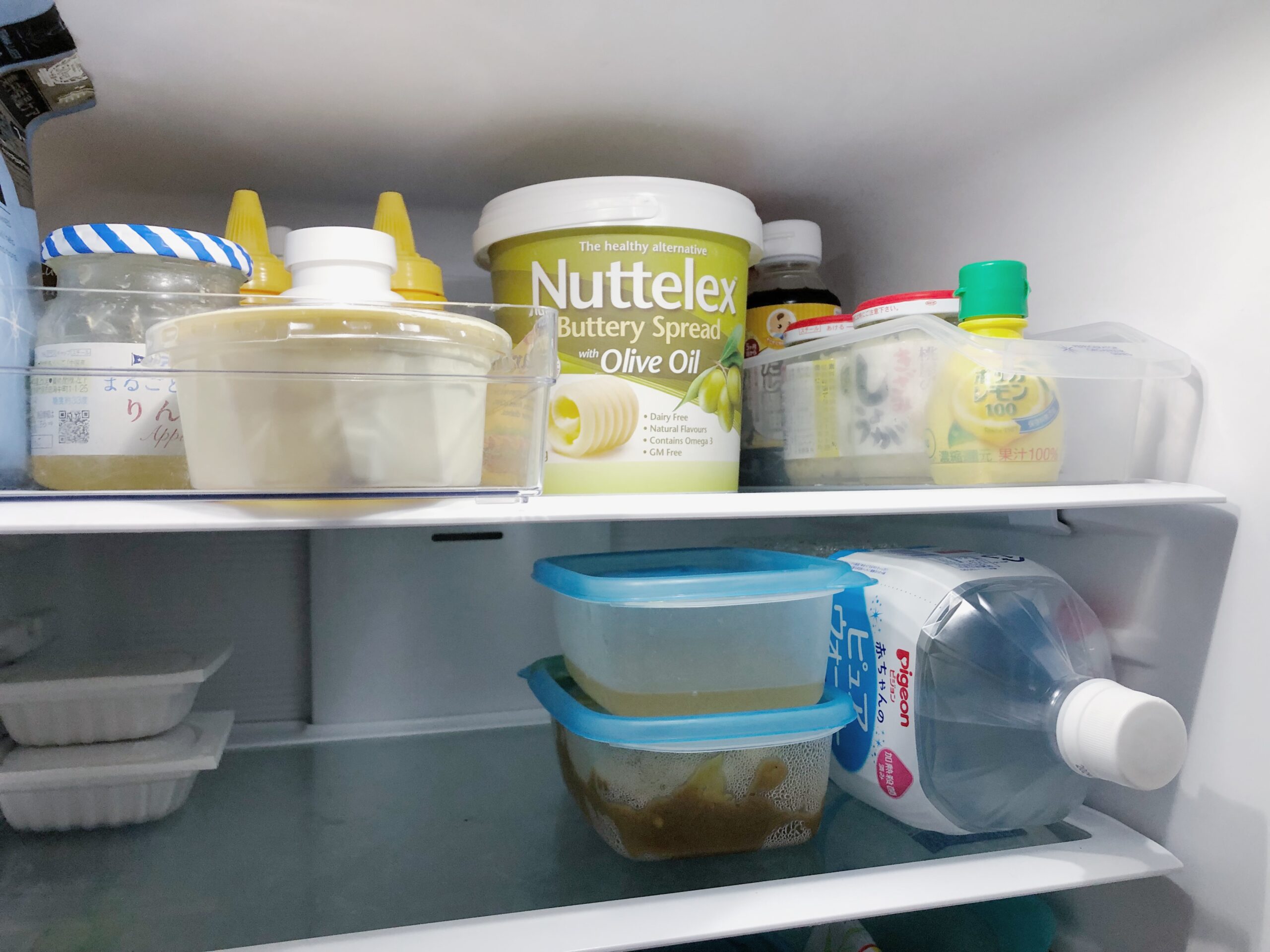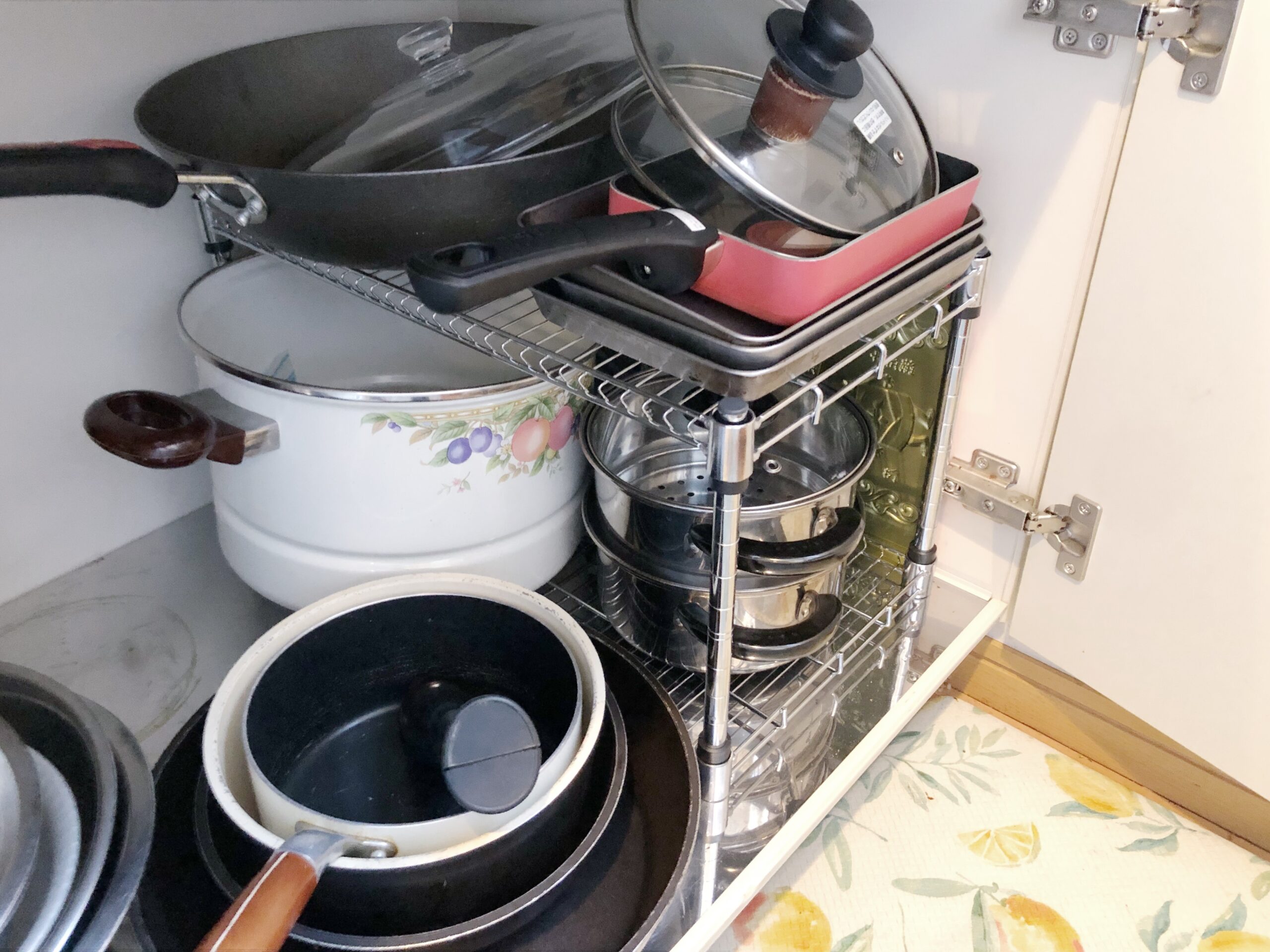Looking for the perfect kitchen gadget that helps rather than hinders? Read on and discover the best way to save time and utilize space with these amazing no-nonsense products.

No-Nonsense Japanese Kitchen Gadgets & Organizational Tools
I didn’t quite realize how small apartment kitchens were in Japan until I found myself trying to make a four-course meal in one. Maneuvering the tiny space proved to be a challenge, however, through trial and error, I’ve discovered the best time-saving appliances and organizational hacks that make using and cooking in your micro kitchen more enjoyable. Below you’ll find new and fun ways to maximize your kitchen’s potential.
Refrigerator Accessories

Refrigerator organization was something I didn’t even think about until moving to Japan. It only takes one trip to Daiso to find a whole aisle dedicated to the task. Containers, bins, and other useful storage just for your fridge? It’s an organizer’s greatest fantasy! It’s such a norm that even Daiso’s online website has its own subcategory for refrigerator supplies.
My favorite fridge customization items include this door pocket partition, this ketchup and mayonnaise stand and this condiment tube stand. Other items recommended for use in the main part of your fridge are storage trays and containers. These aid in separating produce, organizing your meal-prepped food, and even producing a special spot for your vitamins and supplements.

Organizing your fridge might not be at the top of your to-do list, but if you find yourself continuously moving things around and propping up bags and misshapen containers of food with a milk jug, a better and easier option is just a couple hundred yen away!
Pro-Trip: Do you have a sensitive nose and a stinky fridge? Consider purchasing these jelly-type charcoals for your fridge. Their main purpose is to deodorize smelly fridge aromas and are quite commonplace in Japanese households. You can find them in grocery stores, 100-yen shops, and online.
Cabinet Storage & Organization
By now you’ve already deduced that kitchens in Japan are exceptionally small. With less counter-space and storage comes the need to utilize what you have with smart organization. Cabinets in Japanese kitchens tend to be deep and wide but rarely include shelving, especially in lower cabinets. To help with this issue, I recommend adding a rack or two to add a personalized level of “shelving” that works perfectly with the items you have.
For example, this metal rack from Daiso, which needs to be assembled with legs in the height of your choosing, is one the best ways to customize your lower cabinets. In the picture below you can see how easily I’ve organized my pots and pans while simultaneously freeing up space using just one steel rack.

Another way to make use of the space between your upper cabinets and your counters is to add hanging baskets from your upper cabinets or shelves. This Ikea clip-on basket is one of my favorites for hanging storage. I hang mine below my upper kitchen cabinets to store baked goods or fruit to ripen.
Finally, for cooking utensils, use these steel S-shaped hooks to hang large and awkward-sized items for easy access. For kitchen safety, be careful not to hang flammable objects above your gas range.
Electric Dish Dryers
Most of us have experience with electric dishwashers, but have you heard of electric dish dyers?
Electric dish dryers are usually only something you’d expect to see in an industrial kitchen, especially if you’ve worked in one like me. It’s hard to really know what a household electric dish dyer might even look like unless you’ve seen one in action. I certainly didn’t know they were available for the average consumer until ours arrived in the mail.

The usability is quite simple and it looks like a typical dish rack with a hood. Wash your dishes with soap and water, load them in, pull down the hood and crank up the heat. The sheer fact that dishes are fully dried in less than 20 minutes (or sooner depending) is a game changer, especially if you’ve been using a traditional dish drying rack for years. With my electric dish dryer I’m able to sanitize my dishes as well cut significant time hand drying or air drying.
Which kitchen item or organization tool do you plan on trying?



